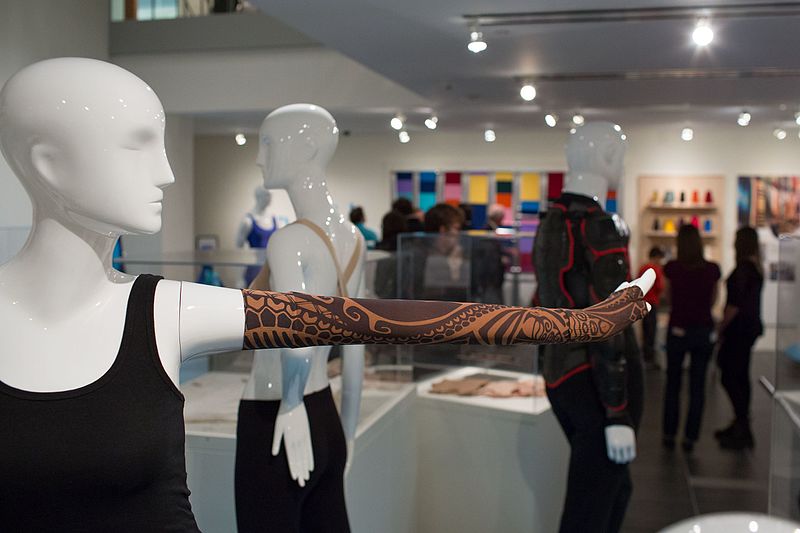Topics
4.2.1 Complex Decongestive Therapy
4.2.2 Manual Lymphatic Drainage
4.2.3 Compression Items
4.2.4 General Treatment
4.2.5 Where to Buy Treatment Items
4.2.6 Questions to Ask About Lymphedema
Chapter 4: Assessment
Learning Objectives
➤ Describe the different ways to treat lymphedema
4.2.1 Complex Decongestive Therapy
Complex decongestive therapy (CDT) can treat any stage of lymphedema (Lymphedema Working Group, 2012). This therapy involves manually draining lymph fluid buildup through compression, exercises, skincare, and education. CDT has a variety of uses, including decreasing swelling, regaining function in your affected arm, increasing comfort, and improving lymph drainage.
CDT has two main stages (Lymphedema Working Group, 2012). First, the initial reduction stage is when you notice significant improvements in your lymphedema. Second, the maintenance phase is when you will maintain the positive effects of CDT.
4.2.2 Manual Lymphatic Drainage
Manual lymphatic drainage involves massaging the areas where the lymph fluid builds up to help that fluid continue circulating (Lymphedema Working Group, 2012). Ensure you are seeing a qualified healthcare provider or certified lymphatic therapist for manual lymphatic drainage to receive professional care.
4.2.3 Compression Items
The compression part of CDT can use a few different compression items, including bandages, garments, and pumps (Lymphedema Working Group, 2012).
Compression Bandaging
Compression bandaging involves wrapping your arm in layers all the way from your hand to your armpit (Lymphedema Working Group, 2012). Ensure you are seeing a qualified healthcare provider with proper training in compression bandaging. This method evenly distributes the pressure that can occur with lymphedema and move stagnant lymph in the arm into lymph nodes that still function properly.
Compression Garments
Compression garments can be used alone or as part of a larger plan to treat or prevent lymphedema (Lymphedema Working Group, 2012). The key is to see a qualified healthcare provider who is trained in fitting compression garments. Before using compression garments, you will complete an assessment of all your life factors to ensure you receive the most appropriate one for your lifestyle.
Compression garments can be worn for specific activities during the day (e.g., exercising and work) or worn all the time (Lymphedema Working Group, 2012). If you wear it constantly, the one you wear at night will be different than the one you wear during the day. You may also consider getting two of the same compression garments so you can wear one while washing the other; this ensures you will always have access to one of your compression garments.
See Image 21 for a compression sleeve (Science History Institute, 2017).
Compression Pumps
Compression pumps are part of intermittent pneumatic compression therapy (IPC) (Lymphedema Working Group, 2012). IPC involves a pump attached to a garment you wear over the affected area; air provided by the pump causes movement within the garment that causes a massage-like effect. This treatment can take anywhere from 30 to 120 minutes.
IPC may not be effective in those with scarring on the affected area (Lymphedema Working Group, 2012).
Image 21: Example of a lymphedema compression sleeve

(Science History Institute / Wikimedia Commons)
CC BY-SA
4.2.4 General Treatment
Besides more direct treatment methods, you can also make more general changes to your life to help treat lymphedema (Lymphedema Working Group, 2012).
Skin Care
Keeping your skin clean and moisturized is critical for preventing skin infections (e.g., cellulitis) (Lymphedema Working Group, 2012). Also, wear loose clothing made of fabrics that will not irritate your skin (e.g., cotton).
Exercise
Not only can specific exercises help prevent lymphedema, but there are also exercises that can help treat it (Lymphedema Working Group, 2012). Compression garments are often worn while exercising to prevent lymph fluid buildup.
If you would like to know about arm exercises you can do, check out Video 16 (Cancer Research UK, 2019b).
Video 16
Arm Exercises for Lymphoedema (Cancer Reserach UK, 2019b)
Education
Educating yourself about lymphedema ensures you have the information you need to make well-informed decisions regarding your health and well-being (Lymphedema Working Group, 2012). You might learn about various aspects of lymphedema, including:
- skincare,
- exercises,
- compression garments and bandaging,
- complex decongestive therapy,
- weight management,
- and nutrition (Lymphedema Working Group, 2012).
4.2.5 Where to Buy Treatment Items
Nightingale Medical Supplies, located in Kamloops, Langley, Vancouver, and Vernon, provides many options for compression items, including breast forms, clothing, and accessories (Nightingale Medical Supplies Ltd, n.d.). You can also receive in-person or telephone consultation to ask questions about the garment fitting process.
Visit Nightingale Medical Supplies’ website below to learn more.
Breast Care (Nightingale Medical Supplies Ltd, n.d.).
4.2.6 Questions to Ask About Lymphedema
- What are the signs and symptoms of lymphedema?
- Is it a permanent condition?
- What can I do to prevent lymphedema?
- Are there treatments that I can do if I develop lymphedema?
- How effective are these treatments?
- How soon should I seek medical attention if I notice changes such as swelling? (Lymphedema Working Group, 2012)